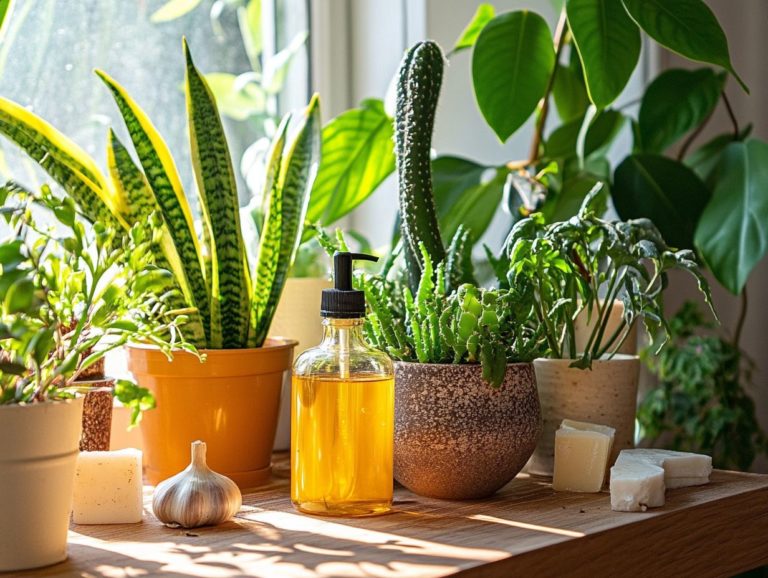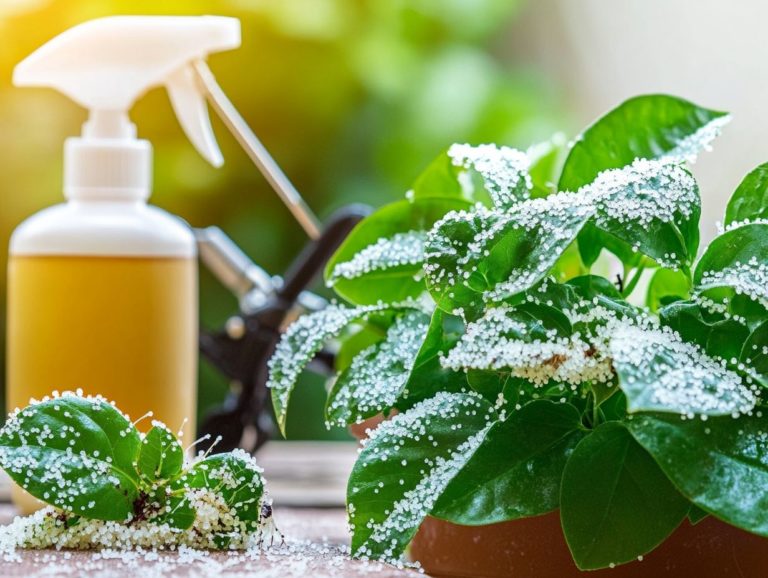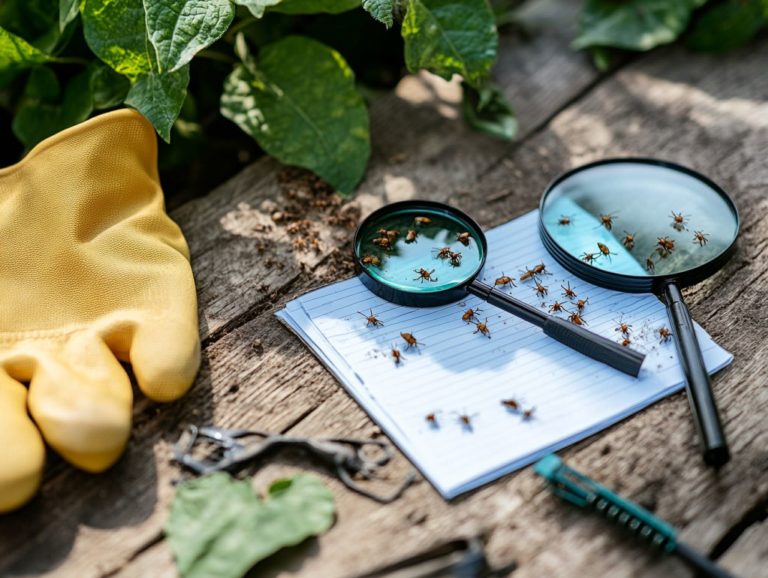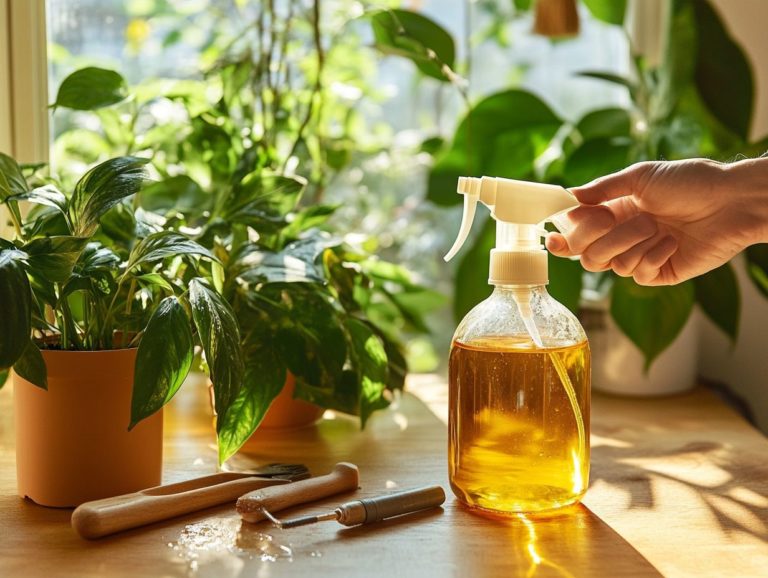How to Recognize the Signs of Overwatering
Overwatering can stealthily undermine the health of your plants. It’s often misinterpreted as nurturing care!
Understanding overwatering and its symptoms is crucial for every plant enthusiast. This guide will help you identify visual cues that show your plants are struggling.
If your plants seem to be struggling, don t worry! You can take effective steps to bring them back to life. Dive in to discover how to ensure your plants not only survive but truly thrive!
Contents
Key Takeaways:
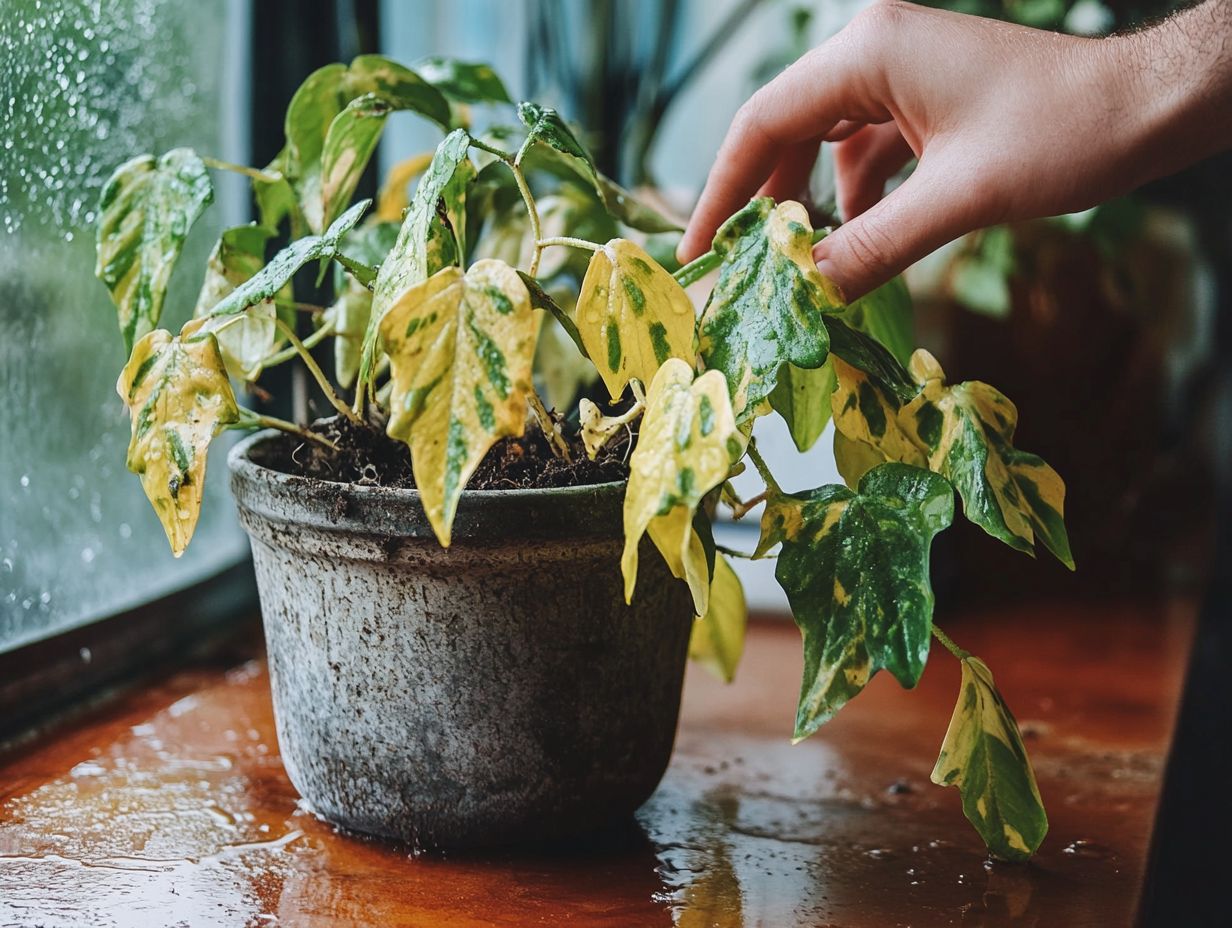
- Overwatering can harm your plants by suffocating their roots and causing nutrient deficiencies.
- Signs of overwatering include wilting, yellowing leaves, and stunted growth.
- To prevent overwatering, water plants thoroughly but allow the soil to dry out between waterings.
What is Overwatering?
Overwatering occurs when excess water collects in the soil, creating soil that holds too much water. This situation can seriously jeopardize plant vitality.
Factors like inadequate drainage holes in pots, compacted soil, and erratic watering schedules often contribute to this issue. Consequently, your houseplants might show signs of distress, potentially leading to root rot, a disease that can harm roots if overwatered if you don’t act swiftly.
Signs of Overwatering in Plants
Recognizing the signs of overwatering is crucial for prompt intervention. These symptoms can appear in various ways, impacting both your indoor and outdoor greenery.
Common visual cues include yellowing leaves, wilting, and browning tips. All of these signal that your plant is having a tough time thriving. You might also observe soft or mushy leaves, dropping foliage, and stunted growth clear indicators that excessive moisture is causing distress.
The presence of fungus gnats often indicates overwatering, as these pests flourish in damp conditions.
Visual Cues and Symptoms

Visual cues and symptoms of overwatering manifest in several ways. Yellowing leaves stand out as one of the most telling signs that your plant might be drowning in excess moisture.
Alongside yellowing, wilting leaves become a red flag, indicating that the roots are struggling to absorb essential nutrients and water. This ultimately weakens your plant’s overall health.
If you notice browning at the tips or edges of the leaves, it could signal the onset of root rot a serious condition that jeopardizes your plant s integrity.
The combination of these visual indicators, like drooping leaves and a general lack of vigor, underscores the immediate distress your plant is experiencing. To learn more about identifying these signs, check out how to tell if your plant is underwatered. Adjusting your watering practices is vital to reviving your plant’s vitality and ensuring its long-term survival.
Effects of Overwatering on Plants
Overwatering your plants can have serious repercussions, jeopardizing their health and vitality, particularly through the onset of root rot. When the soil becomes overly saturated, the roots find it difficult to breathe, leading to unhealthy root systems and diminished nutrient absorption.
This imbalance in the water cycle can amplify existing issues, making plants more vulnerable to diseases and pests. Grasping the effects of overwatering is crucial for providing effective plant care and maintaining the right amount of water.
Impact on Growth and Health
The impact of overwatering on plant growth and health is profound. It often results in stunted growth and a heightened risk of root rot, which can threaten the survival of the plant.
When excessive moisture saturates the soil, it suffocates the roots, depriving them of crucial oxygen and hindering their ability to absorb essential nutrients. This low oxygen environment not only slows your plants’ growth but can also lead to yellowing leaves and wilting, creating a constant battle for rejuvenation.
The risk of fungal infections and other diseases escalates in overly damp conditions, further complicating the challenges your plants face. Ultimately, poor water management initiates a troubling cycle that disrupts the delicate balance of the water cycle, detracting from overall plant health.
Preventing Overwatering
Preventing overwatering is essential for maintaining the health of your houseplants and container plants. It ensures they receive the precise amount of water required for optimal growth. Focus on a few key strategies:
- Make sure your pots have adequate drainage holes.
- Establish a consistent watering schedule that aligns with your plants’ needs.
- Consider using a moisture meter to accurately assess soil moisture levels.
Seek advice from plant experts and apply established gardening best practices to significantly reduce the risks associated with excess water.
Best Practices for Watering Plants

Establishing a proper watering schedule is one of the best practices for maintaining optimal moisture levels in your plants and preventing the negative effects of overwatering.
Consider that different factors such as plant type, soil composition, and weather conditions play a crucial role in determining how often to water. For example, succulent varieties thrive on less moisture, while tropical plants often crave more regular hydration.
A reliable technique for gauging soil moisture involves inserting your finger about an inch deep into the soil; if it feels dry, it’s time to water. By employing methods like the ‘soak and dry’ approach, you can ensure that roots absorb the necessary hydration without becoming waterlogged. It’s also important to be aware of the effects of overwatering houseplants, ultimately fostering healthier growth and vibrant foliage.
How to Revive Overwatered Plants
Reviving overwatered plants involves a carefully curated approach, focusing on essential steps that target root rot and restore the plant’s vitality. By following these methods, you can effectively bring your plants back to health and ensure they thrive once again.
Steps for Recovery and Rehabilitation
The journey to recover and rehabilitate your overwatered plants begins with a careful assessment of root rot. Acting swiftly is crucial.
- Start by gently removing the plant from its pot to examine the root system for any signs of decay or mushiness these are telltale indicators of rot.
- Once you ve evaluated the situation, enhancing drainage becomes your top priority. This involves repotting the plant in fresh, well-draining soil and ensuring that the new pot features adequate drainage holes.
Keep in mind that overwatering can invite unwelcome guests, like fungus gnats. You might need to treat the soil with insecticidal soap or introduce beneficial nematodes to tackle any infestations.
By following these steps, you significantly boost your plant s chances of recovery, allowing it to reclaim its health and vibrancy.
Frequently Asked Questions
1. What are the common signs of overwatering?
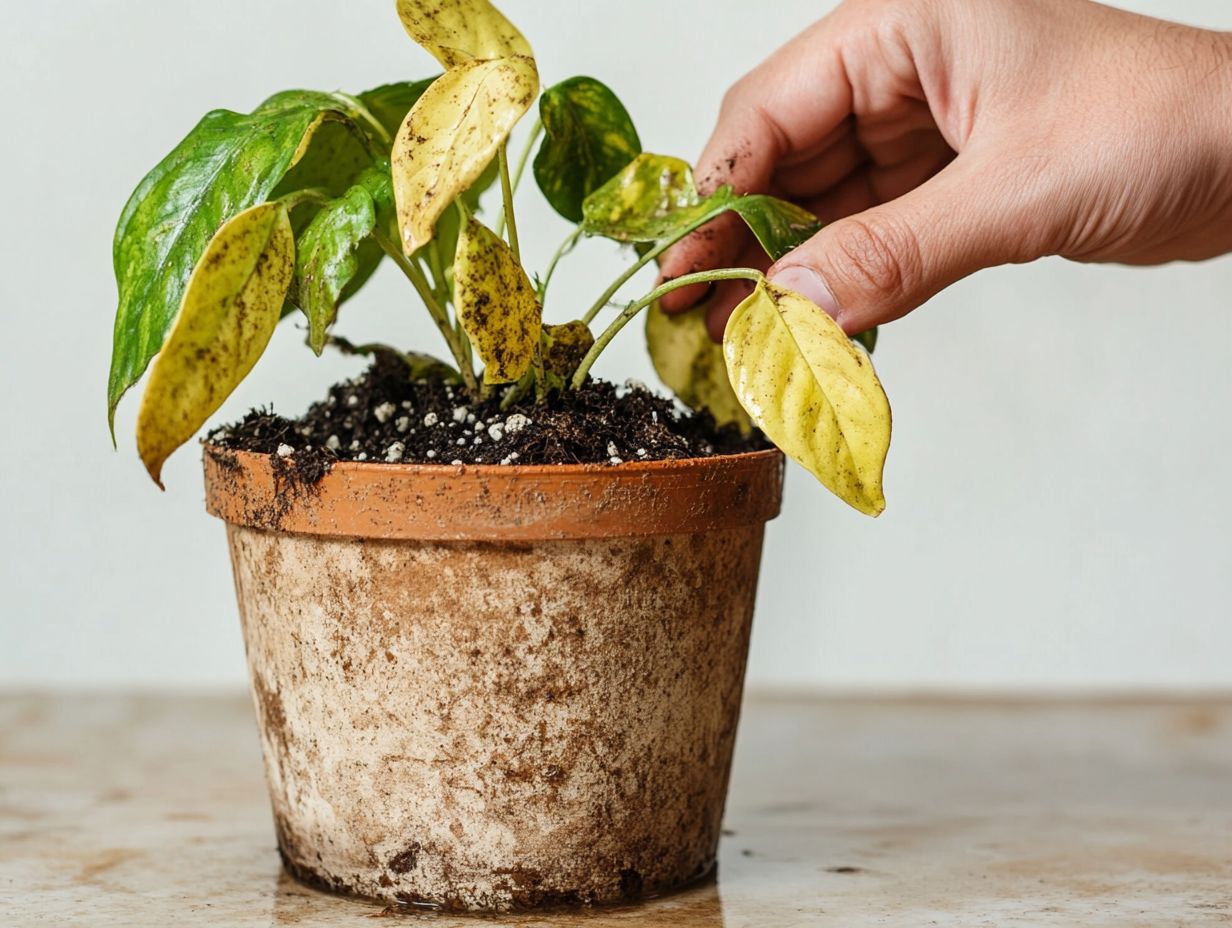
Watch for these signs of overwatering: yellowing leaves, wilting, mold, and stunted growth. Your plants will thank you for being attentive!
2. How can I tell if I am overwatering my plants?
You can tell if you are overwatering your plants by checking the soil moisture. If the soil is constantly wet or feels soggy, it is a sign of overwatering.
3. Can overwatering kill my plants?
Yes, overwatering can lead to root rot, which can ultimately kill your plants. The roots become waterlogged and can’t absorb enough oxygen to survive.
4. Are there any visual cues that indicate overwatering?
Yes, visual cues include leaves turning yellow or brown and wilting. A foul smell from the soil can also indicate a problem.
5. How much water is too much for my plants?
The amount of water needed for each plant varies. As a general rule, water until the soil feels damp but not soaked.
6. How do I fix overwatered plants?
If you suspect overwatering, act fast! Stop watering right away and let the soil dry out.
You can gently remove the container plants from the soil to check for any signs of root rot. If present, trim off any affected roots and repot the plant in fresh, well-draining soil.
Stay tuned for more tips on keeping your plants healthy!

